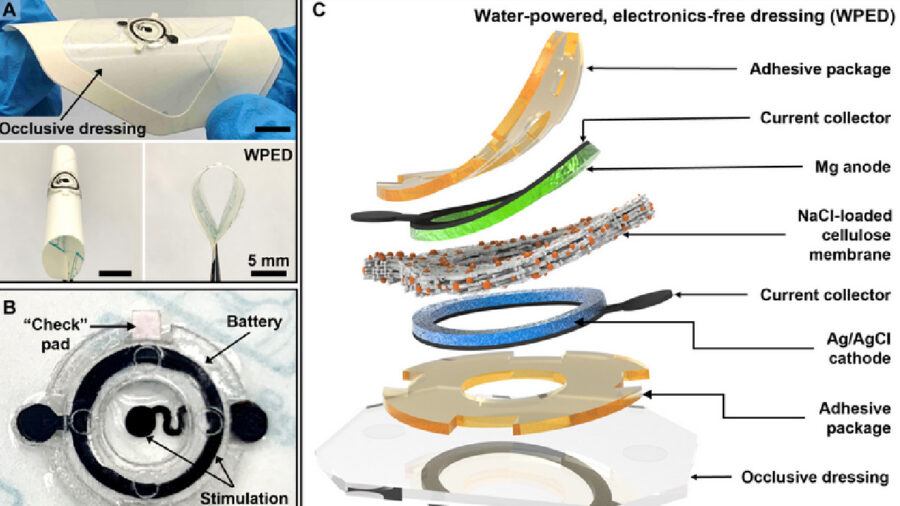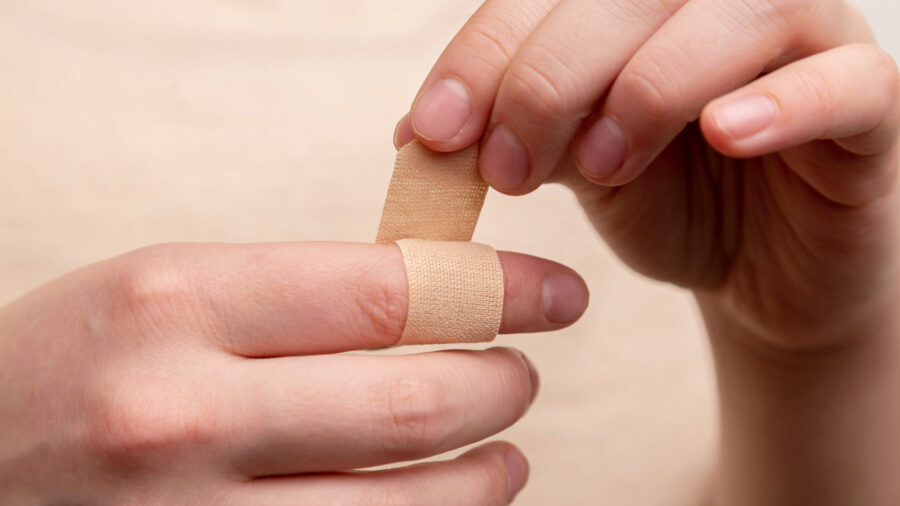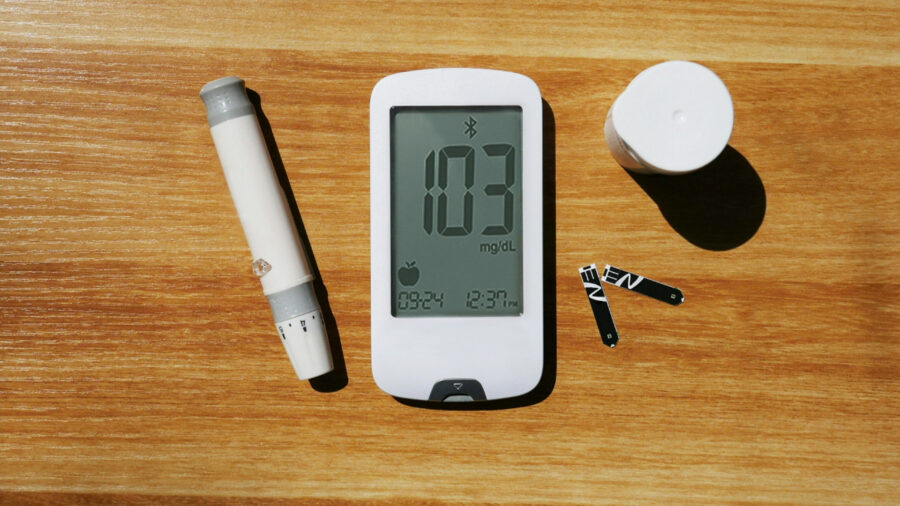Electric Bandage Changes The Future Of Wound Healing

Science Advances has announced the successful function of electric bandages in mice testing. So far, researchers have found that wounds heal 30 percent faster with electric bandages than without them. The race seems to be on to see which researchers will develop the bandages that finally make it to the market for use on humans.
How It Works

This electric bandage works by sending electric nodes throughout an open wound, which stimulates blood flow and causes healing cells to rush to the wound site, closing it up and creating new skin. Scientists have long known that electric therapy works on wounds, but the equipment required to treat patients in hospitals is costly and bulky. The electric bandages, as they are being developed, are inexpensive, costing only a couple of dollars in overhead per bandage.
They can also be used in the home.
Powered By Water?

The electric bandage being developed by the DOD study operates using a water activated battery. A drop of water will charge the bandage, and the battery will stimulate the electric therapy. The electrodes can disperse across irregular shaped wounds and those that go deep into the layers of the skin.
It is telling that the Department of Defense is funding one study focused on electric bandages. Accelerating wound healing for soldiers and other operatives in the field is essential to combat scenarios. Fortunately, the research, and its outcomes, will have a positive impact on the general public as well. Wounds that fail to heal within a month tend to raise medical concerns that can lead to exacerbated problems like amputations.
Advancing The Wound Healing Process

The electric bandage under development at Northwestern University adds an extra element of healing to the process. This bandage also has a monitor within it that gauge where the wound is in the healing process. The near-field communication system will transport information on the wound in real-time.
When the wound is wet, it will trigger the electric therapy to kick in and stimulate healing. As the wound scabs over and dries up, it sends the message to the bandage that electric therapy is no longer needed. Then, this particular bandage will simply dissolve into the body harmlessly as it is biodegradable and will not interfere with the healing process.
A Form Of Cyber Skin

Finally, researchers at the Keck School of Medicine of USC are developing a smart bandage that will not only utilize electric nodes and monitor the wound on which it is applied, but it may also be able to administer necessary medications when warranted. The science involved uses nanotechnology. Researchers call it a sort of “cyber skin.” Imagine, if you will, a smart bandage that can identify, diagnose, and treat a wound.
It could be a game changer for soldiers on the battlefield, diabetics, and everyone in between.
Beneficial For Diabetes Patients

Between 10 and 15 percent of the U.S. population has diabetes, and because this disease affects blood flow and feeling in limbs and extremities, diabetics can get a blister, a cut, or a scratch that goes unnoticed for a long time. Those wounds can fester, become problematic, and then refuse to heal, leading to amputation and, in extreme cases, death. The ability to treat and heal those wounds with an electric bandage could save lives.
The Medical Advancement We’re All Waiting For

In the end, ideally, these three labs will bring revolutionary medicine to the masses at affordable prices so that anyone can benefit from this cutting edge technology. This development has the potential to save millions, if not more, in medical expenses, hospital visits, and wound care.
Source: Science Advances












